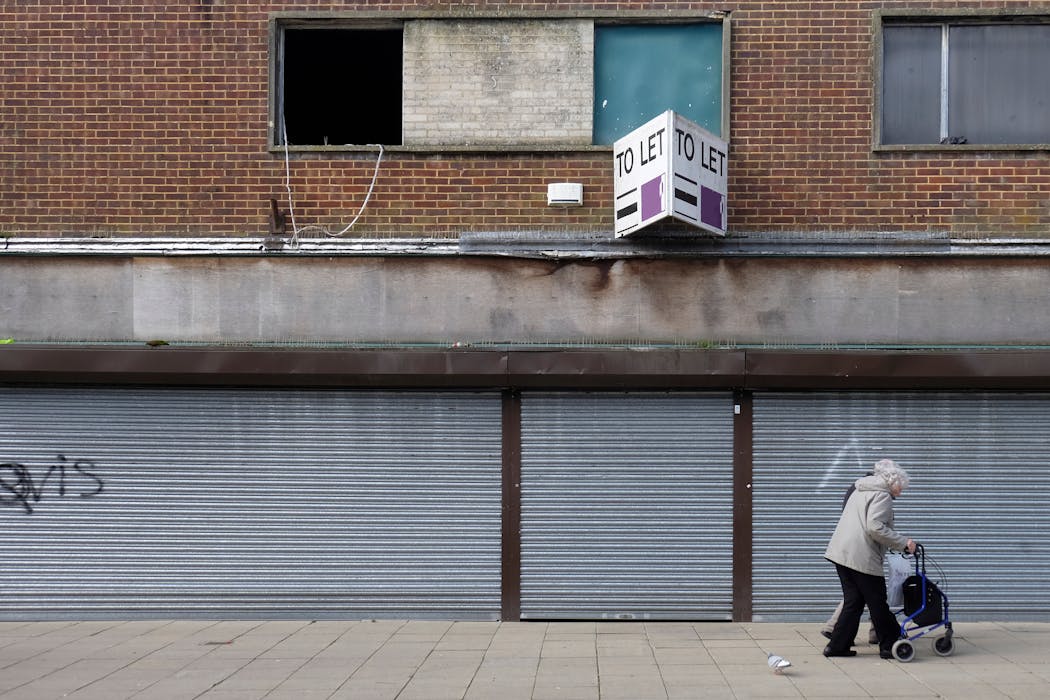
More than a year after the UK government abandoned the phrase “levelling up”, it has now launched a fresh strategy to distribute funding to disadvantaged communities. The promise to these deprived areas is three-pronged: investment in community facilities, enhancing public spaces like parks, and revitalising town centres and high streets.
The “Pride in Place” programme will provide up to £5 billion over ten years to support around 250 communities. A further £150 million will be shared between around 95 places across England, Scotland and Wales through an associated impact fund.
The funding is aimed at building stronger, more empowered communities and enhancing physical infrastructure. It also forms part of the Labour government’s efforts to tackle the electoral threat posed by Reform UK in some of the country’s left-behind areas.
The programme is not a wholly new announcement. In its spending review earlier this year, the government announced that 25 trailblazer neighbourhoods would each receive up to £20 million over the next decade. This funding has now been rolled into the Pride in Place programme. For the additional 144 areas named recently, this will be new funding.
The programme is putting more decision-making power in local hands – and this is certainly a good thing. It includes proposals for facilities for young people, backed by a £66 million fund called #iwill as well as a £175 million Community Wealth Fund.
Another welcome aspect are plans to help communities share learning and best practice, and to empower them to drive change locally. For now though, there is little detail on how this will work.
What’s different about this fund is that it involves allocative rather than competitive funding. This means that there is no bidding or tender process. The plan to allocate funding directly to areas based on need is likely to be welcomed by councils that previously criticised competitive funding processes for being costly and time-consuming to apply for.
Read more: The 'levelling up' bidding process wastes time and money – here's how to improve it
Funding is allocated based on a ranking of neighbourhoods using indices that measure deprivation and community needs. The needs of some areas may have changed since the deprivation index was compiled but compared to the Levelling Up Fund, which was criticised for a lack of clarity, this selection process appears to be clearer and more robust.
Challenges and constraints
But the fund is disappointing in its scale and scope. Specifically, it appears to be focused on smaller-scale cosmetic improvements rather than larger-scale transformational change.
Compared to the New Deal for Communities (NDC) programme, which ran from 1998 to 2011 across the UK, funding for Pride in Place is small. The 39 area partnerships involved in NDC received an average of £50 million – equivalent to nearly £78 million today. By contrast, the highest award from the Pride in Place programme is £20 million.
And the aims of the NDC programme were broader than those of Pride in Place. When NDC was evaluated, litter and anti-social behaviour ranked highly among the issues that people wanted to see addressed. But the funding also supported holistic change by addressing the root causes of challenges such as creating jobs, improving education and training, action against crime, improving the environment and housing and social services.
It was measured against three place outcomes (crime, community, and housing and the physical environment) and three people-related outcomes (education, health and worklessness).

Today, it seems very unlikely that the new programme will offer substantial funding to develop training, education and housing given the sums involved. What’s more, the focus is on revitalising community spaces and boosting local pride rather than tackling inequality in housing or education. All these elements are crucial in driving change in disadvantaged neighbourhoods.
Research has emphasised the importance of long-term holistic funding in addressing regional inequalities in other countries. And a recent study that reviewed UK community and economic development programmes emphasised how important it is to create conditions for communities to harness their “agency and resources”.
But it is difficult to predict the impact of this fund on current or future Reform UK voters. Heading off the challenge from Nigel Farage’s party to Labour’s vote is likely to depend on how deeply the impact is seen and felt by voters at a local level.
This in turn depends on the scale and approach of the programme – things like holistic efforts to tackle social issues and a long-term commitment to the communities involved. This, together with events (the budget this autumn, for example), are likely to shape views both in terms of physical improvements to the areas involved and voters’ perceptions of being heard in policy decisions.
Research has found that constituencies that previously received levelling-up funding saw a lower Reform vote in the 2024 general election. This suggests that visible improvements may indeed erode some of the support for Reform.
But many of the planned projects may not bear fruit until after the next general election. So if the programme is to have a significant impact, it will be important that projects have a tangible impact promptly. Reducing litter, for example, could be a quick win.
The twin approaches of youth engagement and citizen participation are positive aspects of the Pride in Place programme. The sum of funding for developing community facilities is large. But at its core, the plan falls short in addressing economic disadvantages such as skills, employment and housing. Developing a more coherent strategy around these issues is vital if the government really wants to help voters feel pride in their communities.
This article is republished from The Conversation, a nonprofit, independent news organization bringing you facts and trustworthy analysis to help you make sense of our complex world. It was written by: Abigail Taylor, University of Birmingham; Alice Pugh, University of Birmingham, and Jason Lowther, University of Birmingham
Read more:
- Where should governments spend your money? The impossible maths of political and moral decisions
- Tackling the UK’s housing crisis means addressing one key problem: affordability
- Why demonising people as ‘workless’ won’t solve rising economic inactivity
Abigail Taylor has received funding from the Chartered Instiute of Public Policy and Accountancy (CIPFA) for research exploring success factors in how international city regions have made progress in addressing regional inequalities and how these factors map to the UK. Abigail has also received funding from CIPFA, the Daiwa Anglo-Japanese Foundation, the Great Britain Sasakawa Foundation and the Japan Foundation Endowment Committee for research examining how regional growth can be enabled outside of national capitals. It draws on lessons from two second cities: Birmingham in England and Osaka in Japan, and focuses on four critical issues: institutional conditions for growth, regional group formation, funding mechanisms, and monitoring and evaluation. Abigail is also a Co-Investigator on the ESRC, AHRC and UKRI funded Local Policy Innovation (LPIP) Hub.
Alice is the theme led for 'Inclusive and Sustainable Local Economic Performance' on the Local Policy Innovation Partnership Hub, funded by the ESRC, AHRC and UKRI. Alice is also currently on a part-time secondment to the Centre for Local Economic Strategies a charity focusing on the promotion of community wealth building for local economies.
Jason Lowther does not work for, consult, own shares in or receive funding from any company or organisation that would benefit from this article, and has disclosed no relevant affiliations beyond their academic appointment.


 The Conversation
The Conversation
 New York Post
New York Post America News
America News ABC News
ABC News CBS News
CBS News Reuters US Domestic
Reuters US Domestic Associated Press Top News
Associated Press Top News Associated Press US News
Associated Press US News NPR
NPR